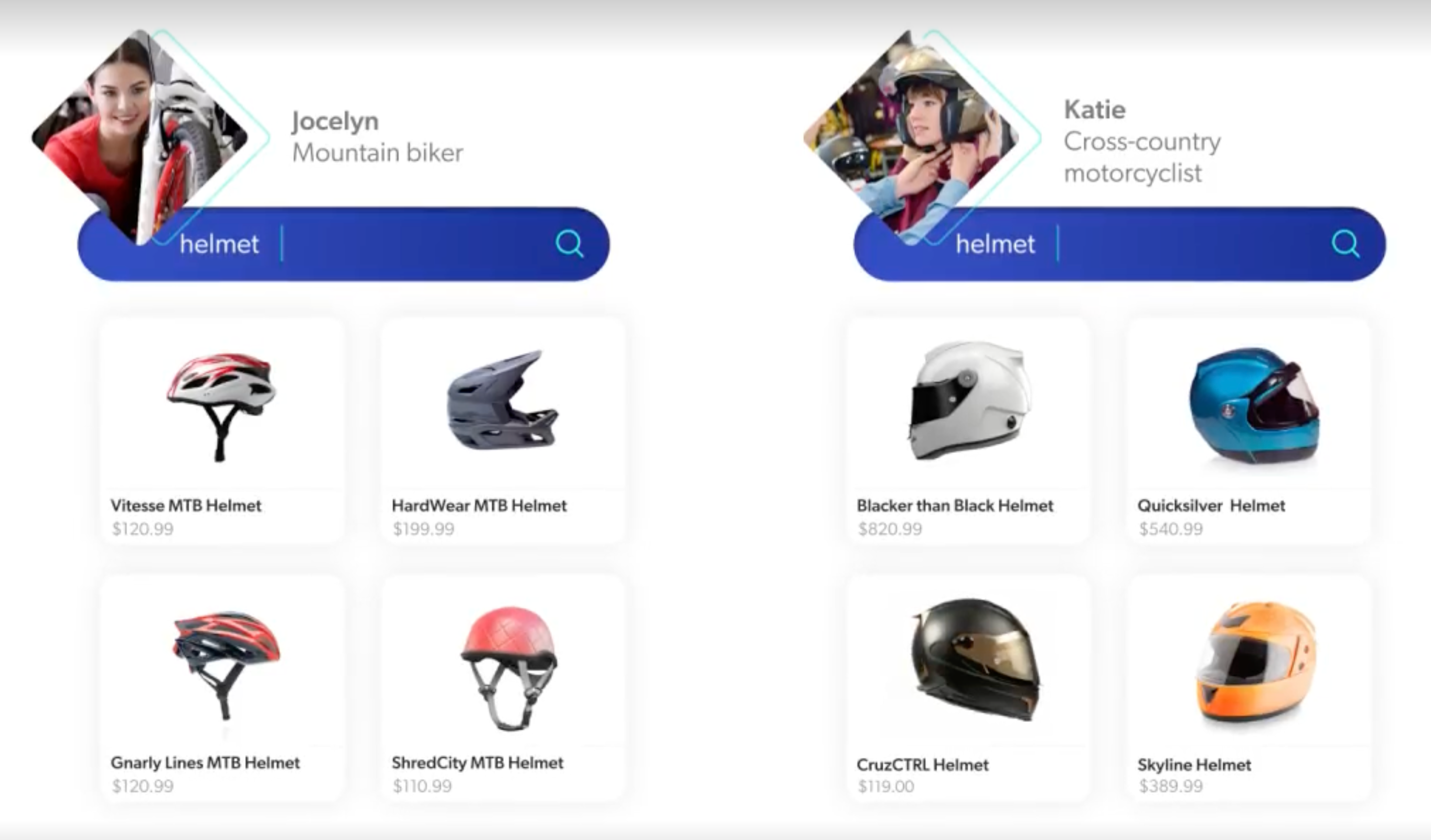About Intent-Aware Product Ranking (IAPR)
About Intent-Aware Product Ranking (IAPR)
Coveo Machine Learning (Coveo ML) Intent-Aware Product Ranking (IAPR) models rank products on search result pages based on the visitor's shopping intent.
IAPR models leverage Coveo’s product embeddings and vectors capabilities. Leveraging these capabilities allows IAPR models to detect visitors' shopping objectives and react to intent changes in real time. This means that IAPR models react to visitors' queries by boosting products that match the current visitor's shopping context, whether they’re authenticated or not.

Members with the required privileges can configure and activate Coveo ML IAPR models using the Coveo Administration Console. See Manage Intent-Aware Product Ranking models for instructions.
How do IAPR models work?
IAPR models leverage advanced deep learning techniques to deliver contextually relevant search results to your visitors. To achieve this, IAPR models rely on the interactions between product and user session vectors.
product vectors are representations of the products available in your commerce catalog, where similar and complementary products are close to each other. These vectors capture relationships between products based on user behavior, visitor data, and product information.
user session vectors are generated based on visitor interactions and usage analytics events within their current browsing session. Product detail view events, which indicate visitor engagement with specific products during the session, are essential in shaping this vector. They’re vital for understanding the visitor's immediate interests and preferences.
A user session vector evolves dynamically as the visitor interacts with your site during their session. It reflects the visitor’s behavior, interests, and interactions in real time, making it a crucial element in returning contextually relevant search results.
How do IAPR models leverage product and user session vectors?
IAPR continuously analyzes the visitor’s browsing session to detect their shopping intent. By understanding what products or categories the visitor is actively exploring and their level of interest in specific attributes or features, IAPR adapts product rankings in real time. It ensures that products are ranked not solely based on their general popularity but also by their contextual relevance to the visitor’s current session. This means products that align with the visitor’s session context receive higher rankings.
IAPR models leverage product and user session vectors to determine the visitor’s intent and rank products accordingly. Here’s a detailed look at how IAPR leverages these capabilities:
-
By continuously analyzing the detail view events of a visitor’s session, the model detects their shopping intent and generates a user session vector.
-
IAPR relies on product vectors to uncover relationships between products in your catalog. These relationships are learned from previous visitor interactions, revealing which products are often associated with, or complement each other.
-
IAPR combines the visitor’s session context, as represented by the user session vector, with the product relationships encoded in product vectors. By identifying the products that share the most similarities with the visitor’s current session, IAPR can rank products that are most likely to align with the visitor’s intent.
Visitors A and B have been browsing for sporting equipment in your Coveo-powered ecommerce website. Visitor A has shown interest in soccer-related products like soccer balls and jerseys, while Visitor B has focused on basketball-related items such as basketballs and jerseys.
By analyzing the products viewed during these two sessions, IAPR can detect that Visitor A is interested in soccer products, while Visitor B is interested in basketball products. Both user sessions vectors are updated according to the visitor’s shopping intent.
Both visitors then search for shoes in the search bar.
By embedding the user session vector in the product vector, IAPR can identify which products are most similar to the visitor’s current session.
Therefore, IAPR can rank soccer shoes higher for Visitor A, and basketball shoes higher for Visitor B.
About the Cold Start model
With traditional algorithms, product vectors are generated based on customer interactions with the different products in your commerce catalog. This means that the more interactions a product has, the more accurate its vector representation will be.
But what if a product has none or few interactions? The vector generation process integrates a Cold Start model to address this issue. This optimized process allows the usage of product’s metadata to build its vector representation and place it accurately within the vector space. For more information, see About the Cold Start model.